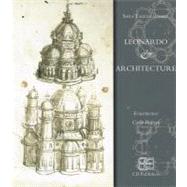Leonardo and Architecture
, by Margherita, Melani; Taglialagamba, Sara; Bogani, Simone (CON); Bogani, David (CON); Gori, Enrico (CON)- ISBN: 9788895686219 | 8895686217
- Cover: Paperback
- Copyright: 12/31/2010
Giorgio Vasari, Leonardo's first biographer, said that the artist used to sketch many designs for architecture. In fact, in the so-called letter of employment written to Ludovico il Moro in 1482, Leonardo presented himself as a military engineer, able to satisfy the demands of the Duke of Milan in peace and in war, declaring that he can give perfect satisfaction and to the equal of any other in architecture and the composition of buildings public and private. And then he speaks of his ability in hydraulic engineering for conducting water from one level to another. Leonardo studied in depth several ancient texts but also the treatises of his own time: in particular the treatise of military and civil architecture by the Sienese engineer and architect Francesco di Giorgio Martini, a text that contains projects for fortifications with bastions, able to offer resistance to the artillery fire. This could explain Leonardo's fascination with fortifications, his involvement in the project to realize the tiburio for the Milan cathedral. He made a great many architectural projects for gardens and elegant buildings, testing out innovative solutions, such as the internal stairs. This allows us to better understand his excellent competence in architecture and why he attempted to plan the ideal city, conceived as being organized on two different levels, one for pedestrians and the other suitable for vehicle transportation. He also projected also religious buildings, studying different solutions for the centralized plan based on complex systems of architectural symmetries.







